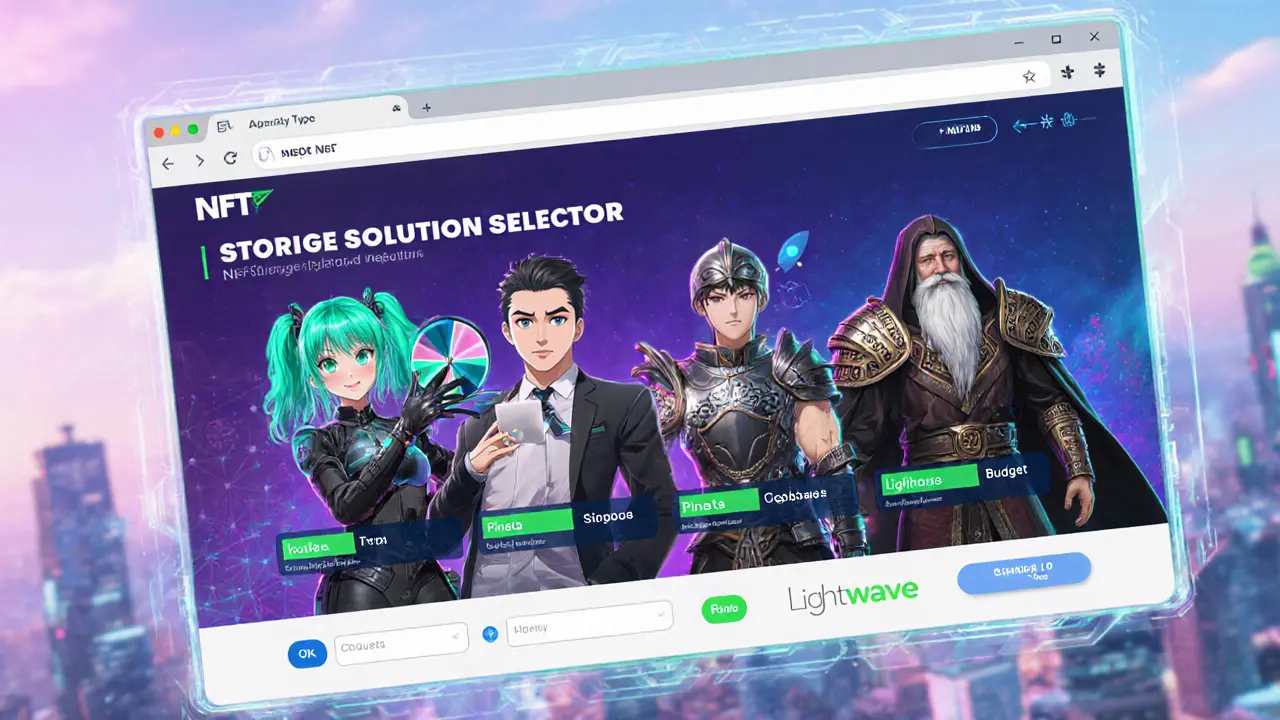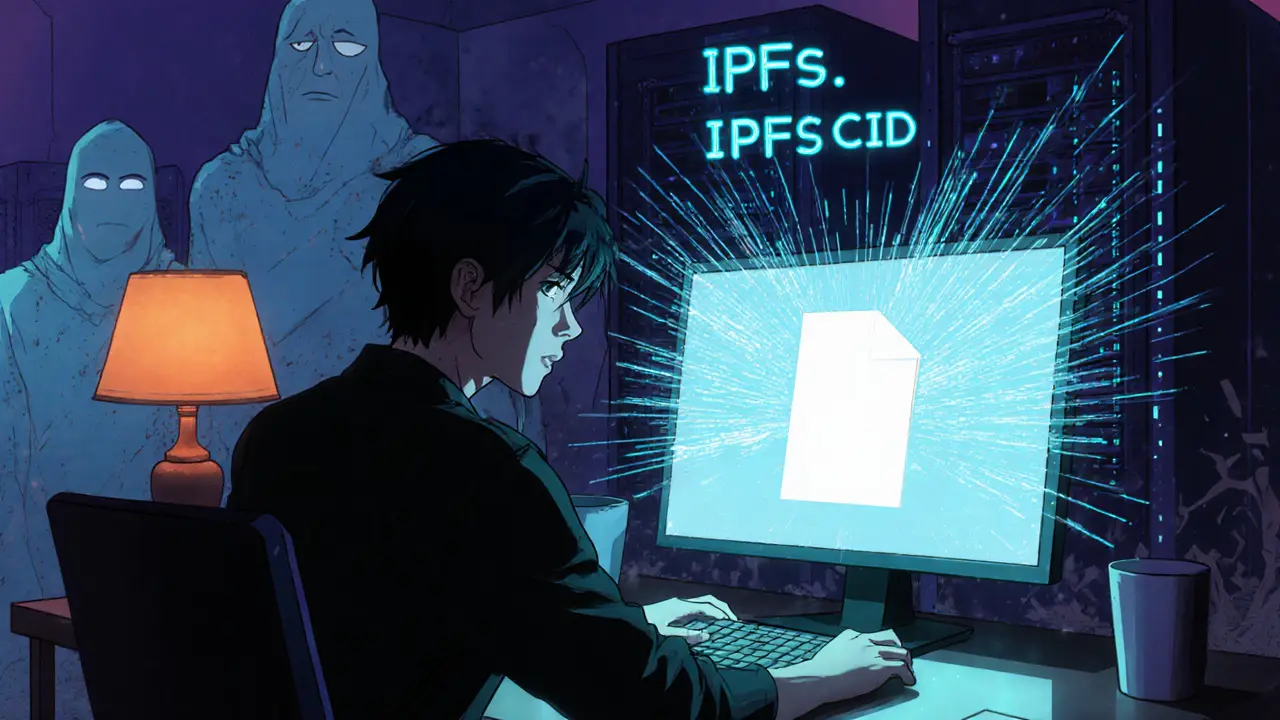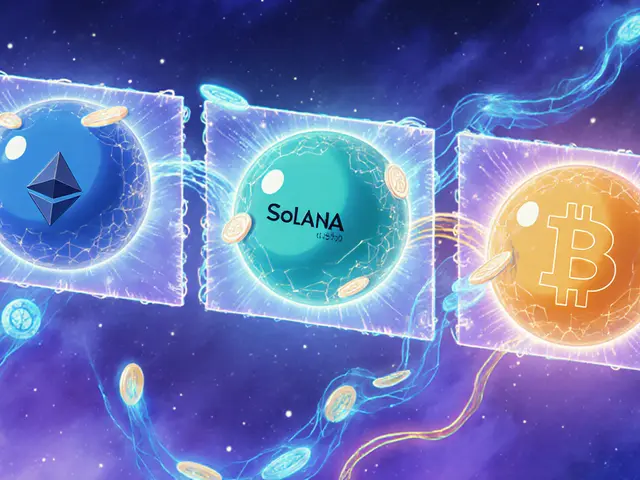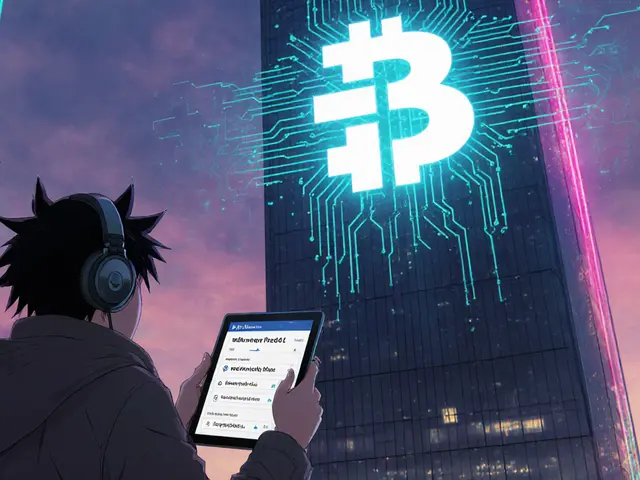NFT Storage Solution Selector
Recommended Storage Solution
Why:
| Service | Hot Storage | Cold Storage | Pricing | Endowment |
|---|---|---|---|---|
| NFT.Storage | Yes | Yes | One-time fee | Yes |
| Pinata | Yes | Optional | Subscription or pay-per-pin | No |
| Lighthouse | Yes | Yes | Flat fee | No |
| Arweave | No | Yes | Upfront cost | No |
Imagine buying an NFT today only to find its image or metadata vanished tomorrow because the server that hosted it went offline. That nightmare is why decentralized NFT storage has become the backbone of a sustainable NFT market. This guide walks you through the why, how, and which services you should trust in 2025.
TL;DR
- Upload files to IPFS for content‑addressed hot storage.
- Lock the data into long‑term preservation with Filecoin‑backed services.
- Choose a platform that matches your needs - NFT.Storage for endowment‑backed permanence, Pinata for easy pinning, Lighthouse for pay‑once hot storage, or Arweave for immutable archiving.
- Costs range from free (with community endowments) to a few dollars per GB; no recurring fees with pay‑once models.
- Follow the three‑step workflow below to safeguard any NFT you mint.
Why Decentralized Storage Matters for NFTs
Traditional NFT projects often store media on centralized cloud services or on a single IPFS pinning provider. Those setups create a single point of failure: if the provider shuts down, the token’s visual representation disappears, eroding buyer confidence and market value. Decentralized storage distributes copies across many independent nodes, making the data resilient to outages, censorship, or accidental deletions.
Beyond reliability, decentralization aligns with the core ethos of Web3 - ownership, transparency, and trustlessness. When the storage layer itself is verifiable on‑chain, anyone can audit that an NFT’s CID (Content Identifier) really points to the intended file, strengthening the link between token and asset.
Core Technologies Behind the Solutions
IPFS is a peer‑to‑peer hypermedia protocol that stores files by content address (cryptographic hash) instead of location. When you add a file, IPFS returns a CID that never changes - perfect for immutable NFT metadata.
Filecoin is a decentralized storage network where miners rent out unused disk space and earn FIL tokens for keeping data available over time. It provides the “cold” storage layer that guarantees data persistence for years, even decades.
Both protocols work together: IPFS offers instant, hot retrieval while Filecoin backs up the same CID for long‑term durability.
Major Decentralized Storage Platforms
Each platform builds on IPFS/Filecoin but adds its own pricing model, UI, and extra features.
NFT.Storage is a service that automatically pins NFT data to IPFS and stores it on Filecoin, funded by an on‑chain endowment that covers ongoing storage fees. Users pay a one‑time fee; the smart contract ensures the data stays alive without future payments.
Pinata is a user‑friendly IPFS pinning service focused on hot storage, offering dashboards, API keys, and analytics for developers and creators. It excels at fast retrieval but requires periodic payments to keep pins active.
Lighthouse is a hybrid platform that combines hot IPFS pinning with a perpetual storage model - you pay once and the data remains pinned forever. Ideal for creators who want a flat‑fee guarantee.
Arweave is a “permaweb” that stores data in a blockweave structure, making the content immutable and permanently accessible. It charges a one‑time upfront cost based on estimated future storage price.
| Service | Hot Storage | Cold (Long‑Term) Storage | Pricing Model | On‑Chain Endowment | Best For |
|---|---|---|---|---|---|
| NFT.Storage | Yes (IPFS) | Yes (Filecoin) | One‑time fee per GB | Yes | Creators seeking guaranteed permanence without recurring fees |
| Pinata | Yes (IPFS) | Optional (via third‑party Filecoin integration) | Subscription or pay‑per‑pin | No | Developers needing robust API and analytics |
| Lighthouse | Yes (IPFS) | Yes (Filecoin, perpetual) | One‑time flat fee | No | Artists preferring a simple, all‑in‑one fee |
| Arweave | No (focus on permanent storage) | Yes (Permaweb) | One‑time upfront cost | No | Projects that need immutable archival guarantees |

Step‑by‑Step: Storing Your NFT Securely
- Upload assets to IPFS. Use a tool like
ipfs addor a UI such as Pinata’s dashboard. Record the returned CID. - Mint the NFT. Include the CID in the token’s metadata URI (e.g.,
ipfs://CID) when calling the smart contract’smintfunction. - Submit the CID to a preservation service. Choose one of the platforms above and follow its “store” flow. For NFT.Storage, you simply call the
storeAPI; the service pins to IPFS and backs it up on Filecoin.
After these three steps, the NFT becomes verifiable on‑chain (thanks to the immutable CID) and resilient off‑chain (thanks to decentralized storage).
Cost & Sustainability Insights
Storing data directly on a blockchain is prohibitively expensive - a 1MB file can cost tens of dollars in gas. Off‑chain solutions slash that cost dramatically. Here’s a quick snapshot for 2025:
- NFT.Storage: roughly $0.10 per MB for the one‑time fee; the on‑chain endowment covers ongoing Filecoin storage for up to 5years.
- Pinata: $0.02 per GB per month for premium plans, plus optional Filecoin add‑on at $0.01 per GB per year.
- Lighthouse: flat $0.15 per MB, no further payments.
- Arweave: price index at $0.03 per MB (adjusts based on network demand).
When budgeting, factor in the size of your media (image, video, 3D model) and whether you’ll need fast hot access (IPFS) versus pure archival (Arweave).
Choosing the Right Service for Your Project
- Need guaranteed permanence without monitoring? NFT.Storage’s endowment or Lighthouse’s pay‑once model are strongest.
- Running a high‑traffic marketplace? Pinata’s API rate limits and analytics help you scale quickly.
- Building a cultural archive or museum? Arweave’s immutable permaweb offers the legal‑grade permanence many institutions demand.
- Small artist with a single piece? Any of the pay‑once options (Lighthouse or NFT.Storage) keep costs low and management simple.
Remember, you can also combine services - pin to IPFS via Pinata for fast reads, then back up the same CID on NFT.Storage for long‑term safety.
Future Trends: What 2025‑2026 Holds
Industry analysts predict three big shifts:
- Zero‑knowledge proofs for private storage. Projects are experimenting with zk‑SNARKs that let users prove they store data without revealing the data itself, adding a privacy layer for sensitive NFTs.
- Dynamic pricing on Filecoin. New market mechanisms will let storage providers offer spot‑price discounts, making bulk archival cheaper during network idle periods.
- Deeper wallet integration. Upcoming wallet updates will read the NFT.Storage Checker directly, showing a green lock icon when an asset is verified as permanently stored.
Keeping an eye on these developments will help you future‑proof your NFT collection.
Frequently Asked Questions
What is the difference between hot and cold storage?
Hot storage (IPFS) keeps the file instantly reachable for browsers, marketplaces, and wallets. Cold storage (Filecoin, Arweave) replicates the data across many nodes for long‑term durability, but retrieval may take a few seconds to minutes.
Do I need to pay recurring fees with NFT.Storage?
No. A one‑time fee funds an on‑chain endowment that automatically covers Filecoin storage costs for the foreseeable future.
Can I migrate data from Pinata to NFT.Storage later?
Yes. Since both services use IPFS CIDs, you can simply retrieve the CID from Pinata and submit it to NFT.Storage’s store API. The file will be re‑pinned and backed up on Filecoin.
Is Arweave really permanent?
Arweave guarantees data persistence by incentivizing miners with a one‑time upfront payment that covers storage forever, assuming the network remains operational.
How do I verify that my NFT’s metadata is safely stored?
Use the NFT.Storage Checker (open‑source on GitHub) or wallet integrations that read the on‑chain endowment status. A green check means the CID is confirmed on both IPFS and Filecoin.












april harper
October 25, 2024 AT 14:41 PMIn the vast ether of digital art, the silent drift of an uncared token mirrors a soul lost to oblivion; we must anchor these creations with the steadfast chains of decentralized storage.
Yet, the guide whispers the same old mantra without daring to ask why we accept the status quo. The promise of permanence feels like a promise to the gods-grand yet untested. Still, the author's hand seems too lazy to probe deeper.
Jacob Anderson
October 25, 2024 AT 14:58 PMOh great, another pricing table that pretends simplicity solves the existential dread of a vanished meme. If I wanted a subscription for peace of mind, I'd just pay my landlord.
VICKIE MALBRUE
October 25, 2024 AT 15:15 PMLove the clear breakdown of options and the optimism about keeping art alive forever.
Waynne Kilian
October 25, 2024 AT 15:48 PMi kinda see ur point but maybe we should also think bout how these servicces can help emerging artists from places like sa. decentralisation isnt just tech its a way to level the playing field, ya know?
Billy Krzemien
October 25, 2024 AT 16:38 PMFor anyone budgeting, start by measuring your asset size then match it to the per‑GB rates listed. NFT.Storage’s one‑time fee is ideal if you don’t want to monitor recurring costs. Pinata shines when you need quick API access for a bustling marketplace.
Amie Wilensky
October 25, 2024 AT 17:28 PMIndeed, the notion of “pay‑once and forget” is alluring, yet, one must consider the hidden operational overhead, the latency of retrieval from cold storage, and the ever‑shifting market dynamics of Filecoin, which, although promising, can introduce unexpected cost spikes, especially during network congestion, so a balanced approach, perhaps combining hot pinning with periodic verification, would serve most creators well.
MD Razu
October 25, 2024 AT 18:35 PMDecentralized storage is not a fad; it is the backbone of any lasting NFT ecosystem. First, the immutability of IPFS guarantees that the content identifier never changes, which is a fundamental property for provenance. Second, without Filecoin’s long‑term contracts, the data would eventually disappear like a forgotten diary. Third, the cost structures outlined in the guide reveal a clear trade‑off between upfront investment and ongoing maintenance. Fourth, creators who prioritize artistic integrity should gravitate toward platforms with on‑chain endowments, because that removes human error from the equation. Fifth, developers building marketplaces cannot ignore the latency penalties introduced by cold storage; they must architect caching layers. Sixth, the emerging zero‑knowledge proofs mentioned for private storage will soon reshape compliance requirements. Seventh, dynamic pricing on Filecoin could lower barriers for bulk archival if you time your uploads correctly. Eighth, integration of storage verification glyphs into wallets will soon become a UX standard, so start testing today. Ninth, the guide’s comparison table, while helpful, omits the critical factor of community support, which can be a lifesaver during outages. Tenth, when evaluating Pinata versus Lighthouse, consider your team’s familiarity with API rate limits; a misconfiguration can lead to costly throttling. Eleventh, Arweave’s one‑time fee is appealing, but its lack of hot retrieval means you might need a secondary pinning service for user‑facing apps. Twelfth, the legal implications of storing copyrighted material on a public network cannot be ignored; consult counsel if unsure. Thirteenth, remember that the per‑GB pricing is volatile; set aside a buffer in your budget for unexpected spikes. Fourteenth, for cultural institutions, the immutable guarantee of Arweave aligns with archival standards such as OAIS. Finally, adopt a multi‑layered strategy: pin to a fast gateway, back it up on Filecoin, and optionally seal a copy on Arweave for true eternity.
Ben Dwyer
October 25, 2024 AT 19:58 PMWhen you’re unsure which service fits, start with a small test upload. Verify the CID on both IPFS and Filecoin, then scale up as confidence grows.
Lindsay Miller
October 25, 2024 AT 21:21 PMThat makes sense. Easy steps help everyone, especially new artists.
Katrinka Scribner
October 25, 2024 AT 22:45 PMGreat guid! 😃👍